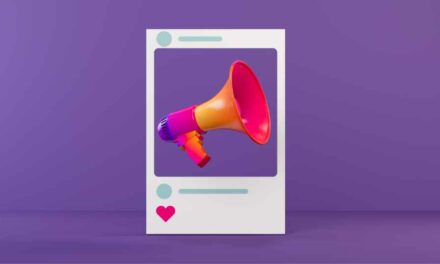With the internet becoming exponentially more crowded every year, advertisers are looking to make immediate and concise connections with users. Audiences are no longer willing to read lengthy advertisements or scan through boring product descriptions to learn about a brand. As reflected in the mega popularity of products like Instagram and Snapchat, today’s users want to feel immersed in a visual experience.
As they scroll through timelines and feeds brushing past photo after photo, consumers are forgoing language and pervasive sales pitches in favor of witnessing a brand interact with Facebook fans and Twitter followers. Localization is how you stand out, and visual content marketing is making it more achievable than ever before.
Removing Language Barriers
Emphasizing visual elements enables brands to engage a wider audience by removing language barriers. Pictures are replacing words as primary storytelling vehicles, and we’re seeing many organizations use this to their advantage.
In 2014, the World Wildlife Fund launched it’s #LastSelfie Snapchat Campaign to raise awareness about endangered animals. Two ad agencies, one in Turkey and the other in Denmark, spearheaded the effort which sought to utilize the fleeting nature of Snapchat images (which disappear after a few seconds) as a metaphor for the rapid extinction of many animal species. The WWF posted a series of #lastselfies featuring our favorite animals. The goal was to urge millennials to do their part in trying to salvage them before it is too late.
Psychology studies have shown that people are more likely to feel empathy for the subject of a selfie, and empathy leads to action. As a response to this powerful imagery, the World Wildlife Fund saw their content posted by 40,000 Twitter users in one week, taking just three days to reach their monthly target. What started as a local project in Turkey and Denmark, soon spread throughout the world thanks to the emotional stories shared on Snapchat.
Leveraging Social Media
In 2016, Instagram and Snapchat are the most prevalent social media names in visual content marketing, only falling behind Facebook in overall social media popularity (among millennials). That said, Facebook and Twitter are still great channels for connecting with your customers and engaging your audience. One company that’s done an excellent job at leveraging both is Main Street Hub.
Based out of Austin, TX, Main Street Hub is a marketing company that helps small businesses around the country “get more customers & keep them coming back through #socialmedia, customer reviews & email marketing.” Rather than having a generic Twitter page that feeds you marketing cliches, Main Street Hub enhances its brand with a personal touch.
We get to SEE the faces of their company rather than hear about how great they are. It’s a humanizing touch that caters perfectly to its small business client base. On Facebook, Main Street Hub recognizes its strength in imagery, and includes a direct link to its Instagram feed. And why not? Customers move across channels and a picture can connect the dots.
Clients, in this case small businesses, want to feel a part of the team, and introducing a Floor Support Manager, taking them on a tour of the office, or sharing a few local hangouts is one way to get them onboard.
Video Visual Work Well
Now let’s talk about Nike. The company is catering to aspiring athletes and avid gym goers, so how does it use visuals? Since it’s hard to convey rapid movement through images alone, Nike posts short (two minute or less) videos to its Twitter page.
Ostensibly these are commercials for the brand, but they don’t feel like it. Nike shoots each video like a documentary, using high quality storytelling devices designed to motivate its aspiring athletes and gym-going consumer base.
Think about your core audience and how it would be best affected by visual marketing techniques. Check out the strategies implemented by your competitors for greater insight into what’s effective, and routinely monitor Snapchat and other social media channels for product updates that can lead to greater targeting and access to your audience. These can include newly introduced features that will benefit your brand (like Snapchat’s introduction of real time video chats and auto-advanced stories).
The Power of Emojis
The ascension of emojis as a form of business currency has been quite remarkable. There once was a time when you’d only see them in text messages between close friends or significant others, but never in a professional setting. Well, today they’re being used by some of the top global brands, like this Bud Light Twitter ad in celebration of the Fourth of July.
From 2014 to 2015 we saw a 14% jump in brands using emojis in Facebook and Twitter posts, and 2016 will likely see a more exponential increase. Believe it or not, emojis are perhaps the most psychologically powerful form of visual content marketing. Scientists have found that when people see a smiling face online, their brain reacts as if they’re looking at a real human face. They suddenly feel happier, and share a more indelible connection with the brand. How can your business bank on this connection?
Well, Twitter is now letting brands target ads based on the emojis people use. Yes, that means that users who frequently post a basketball emoji will get promoted ads from the NBA. But what about targeting users who post smiling or crying faces? We’ll just have to wait and see how that plays out. Nonetheless, it’s a huge step toward legitimizing this once facile form of communication.
As we saw with the Bud Light tweet, emoji usage is becoming increasingly artistic and competitive. In 2015, Coca Cola became the first brand to pay for an emoji on Twitter.
This level of commitment from one of the world’s largest brands prompted others to expand their emoji arsenal. The result of these creatives is a psychological stimulant among viewers, with a curiosity-inducing element leading to user engagement. These billboard ads made up entirely of emojis were a massive hit for McDonalds.
So what can you do? Use emojis sparingly (at first) and track engagement patterns. As the teenager and millennial generations mature (have more disposable income), prepare to start employing these visuals more often.
The Way We Localize Is Changing, Not Going Away
Localizing content has always been a cornerstone of effective marketing, but what used to consist of snappy slogans and headlines is now becoming dominated by emojis, emoticons, and Snapchat filters. If used correctly, this trend could prove to be advantageous for your brand’s reach. Short form images and videos will bring new audiences into your world and show them, rather than tell them, why your brand matters.












